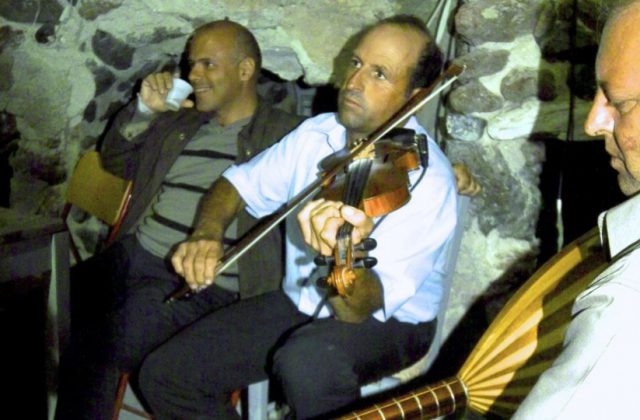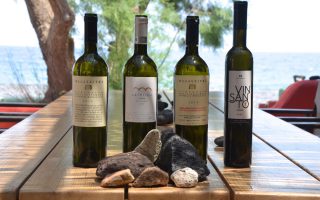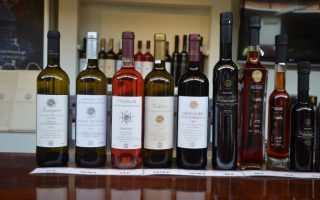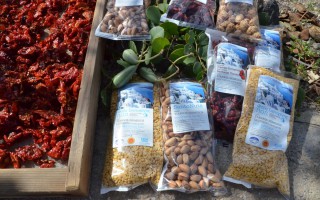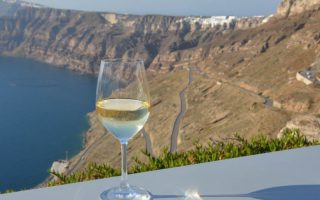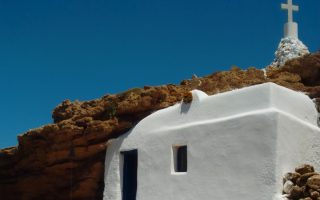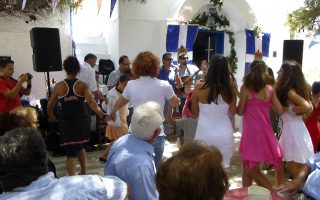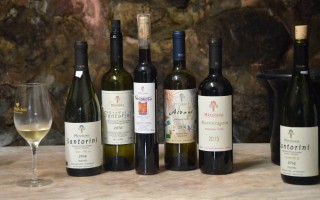The church of Agia (Saint) Matrona with its characteristic palm tree lies to the east of the main street in Phoenikia on Santorini and was built in 1859 by Frangisko Plati, a shipowner from Oia. In the old days Phoenikia was the farmers’ quarter of Oia. But here one also found the kanaves (cellars) belonging to Oia residents and the ruling class who stored their wine barrels, farming equipment and quite often even their livestock in these impressive enormous underground spaces. In the beginning of the 20th century there were more than 150 of these kanaves, but they were abandoned after the war. Today many have been transformed into pensions, while others remain abandoned; very few are still used for storage.
The feast day or panigyri of Agia Matrona in Phoenikia takes place on October the 20th, after the hordes of tourists have departed and the local population can have some fun amongst themselves.
Μore at Greek Gastronomy Guide…
Source: Greek Gastronomy Guide




